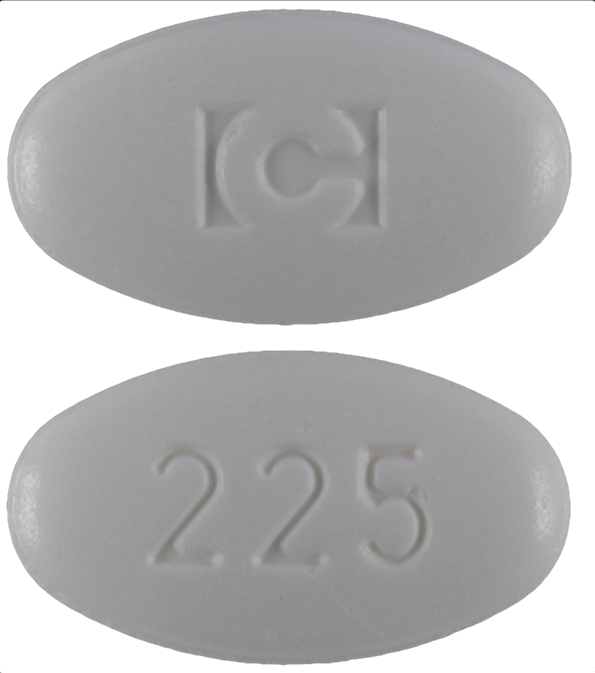Last Updated November 10, 2020
Provigil (modafinil) and Nuvigil (armodafinil) are both medications prescribed widely as treatments for extreme sleepiness or other sleeping disorders, which help patients stay awake during normal waking hours. It is believed that both drugs work by enhancing dopamine signals within the brain. However, the stark truth is that the actual wakefulness mechanism of either drug remains unknown. The more common side effects of Provigil and Nuvigil are documented and well established. However, recently, these drugs have been scrutinized further for potential associations with cardiac issues, birth defects, and Stevens-Johnson Syndrome. Both modafinil and armodafinil are listed as schedule IV controlled substances.
Documented Side Effects from Clinical Trials
Originally developed in the 1970s by a French professor in medical sciences, Michel Jouvet, modafinil began as an experimental treatment for narcolepsy in 1986. It wasn’t until 1998 that American drug manufacturer Cephalon gained approval from the U.S. Food and Drug Administration (FDA) to market Provigil in the United States.
According to modafinil’s FDA labeling, the drug was evaluated for safety in over 1,100 patients in placebo-controlled clinical trials and the most common adverse reactions (those affecting 5% or more) were: headache, nausea, dizziness, and insomnia. Beyond the significance of these findings, the FDA’s label also lists the following as some other side effects witnessed during clinical trials at a rate of 1% or more:
- Anxiety
- Diarrhea
- Dry Mouth
- Depression
- Dyspepsia
- Fatigue
- Palpitations
- Rash
- Upper Abdominal Pain
- Agitation
- Anorexia
- Constipation
- Contact Dermatitis
- Increased Heart Rate
- Migraines
- Thirst
- Tremors
- Vomiting
Subsequent Warnings and More Serious Side Effects
Birth Defects and Use by Women
Both Provigil and Nuvigil are classified as “Category C” drugs by the FDA – a designation that the agency, while concerned about their use during pregnancy, does not have enough evidence to suggest a clear safety hazard. Nonetheless, according to some reports, the rate of congenital malformations in babies connected with exposure to modafinil and armodafinil is as high as 15%.
Teva Pharmaceuticals Ireland and Health Canada issued pregnancy and birth defect warnings in 2019 covering Provigil and Nuvigil. The warnings urge healthcare providers not to prescribe either medication to women who are pregnant or who plan to become pregnant. In 2009, the FDA was concerned enough to establish a “pregnancy registry” for Provigil and Nuvigil to gather more information on the possible association of the drugs with fetal development. The registry tracks pregnant women exposed to at least one dose of either medication at least six weeks prior to conception and/or pregnancy.
Birth defects which have been associated with both Provigil and Nuvigil:
- Cleft Lip or Palate
- Hypospadias
- Congenital Heart Defects
- Microcephaly
Multi-Organ Hypersensitivity, Skin Rashes and Stevens-Johnson Syndrome
In 2007, after reviewing studies and adverse event reporting through its FAERS system, the FDA revised the labeling for both Provigil and Nuvigil to include information and warnings about serious rashes requiring hospitalization as well as Stevens-Johnson Syndrome (SJS).
SJS is a rare and severe skin reaction to a particular medication. It is an acute inflammatory condition linked with hypersensitive skin reactions. It is typically characterized by widespread blisters on the face and trunk of the body. These red/purple pustules which form over the body are intensely painful. As the reaction progresses, it takes up inside the mucus membranes and can spark blisters in the mouth, nose, eyes, and genitals. SJS requires hospitalization and the recovery time from an SJS reaction can persist from anywhere from several painful weeks to months.
In addition to SJS, the FDA’s label warning includes cautionary language concerning Toxic Epidermal Necrosis (TEN) – similar to SJS, and Drug Reaction with Eosinophilia (DRESS). DRESS, also referred to as “multi-organ hypersensitivity” is typically characterized by fever, rash, lymphadenopathy, and facial swelling alongside other maladies such as hepatitis, nephritis, and myocarditis.
Mental Health and Psychiatric Symptoms
During clinical trials for Nuvigil, some patients reported anxiety, agitation, nervousness, and irritability while on the drug. Other patients during trials reported issues with depression and suicidal ideation. The FDA expressed that caution should be exercised with Nuvigil when it is given to patients with a history of psychosis, depression, or mania and that if psychiatric symptoms emerge – patients and their physicians should consider discontinuing use. These same label warnings extend to Provigil as well.
Cardiovascular Health and Reactions
Some of the clinical subjects involved in the modafinil trial reported adverse cardiac reactions, including chest pain, palpitations, dyspnea, and transient ischemic T-wave changes on the electrocardiogram. The subjects involved also suffered from issues involving mitral valve prolapse or left ventricular hypertrophy. Accordingly, the FDA warns that patients suffering from these maladies should avoid Nuvigil and Provigil, especially if they have had prior issues with stimulants.
Analysis of studies conducted during trials of Nuvigil revealed that patients experienced “small average increases” in mean blood pressure. Another cohort of patients required new or increased use of blood-pressure medication to reduce hypertension. The FDA warns that caution should be exercised before prescribing either Nuvigil or Provigil to patients with known cardiovascular disease or similar issues.
Sources Cited (15)
2) “Armodafinil – FDA Labeling: https://www.accessdata.fda.gov/drugsatfda_docs/label/2017/021875s023lbl.pdf
3) “Armodafinil – FDA Adverse Event Reporting System (FAERS)” https://drugcentral.org/drugcard/4501
4) “Armodafinil (Oral Route)” https://www.mayoclinic.org/drugs-supplements/armodafinil-oral-route/side-effects/drg-20071125?p=1
5) “Modafinil (Oral Route)” https://www.mayoclinic.org/drugs-supplements/modafinil-oral-route/side-effects/drg-20064870?p=1
6) “The Safety of Stimulant Medication Use in Cardiovascular and Arrhythmia Patients” https://www.acc.org/latest-in-cardiology/articles/2015/04/28/10/06/the-safety-of-stimulant-medication-use-in-cardiovascular-and-arrhythmia-patients#:~:text=Rare%20treatment%2Drelated%20cardiovascular%20events,40%2Dweeks%20of%20modafinil%20therapy.&text=Most%20common%20were%20palpitations%20(1.5,%2C%20and%20tachycardia%20(1.0%25).
7) “Modafinil-Induced Psychosis: A Case Report” https://www.ncbi.nlm.nih.gov/pmc/articles/PMC5353011/
8) “Modafinil Elicits Sympathomedullary Activation” https://www.ahajournals.org/doi/full/10.1161/01.hyp.0000158267.66763.63
9) “Preliminary Data Raises Concerns About Modafinil Use in Pregnancy” https://womensmentalhealth.org/posts/preliminary-data-raises-concerns-about-modafinil-use-in-pregnancy/
10) “ALERTEC (modafinil) and the Risk of Congenital Anomalies” https://healthycanadians.gc.ca/recall-alert-rappel-avis/hc-sc/2019/70201a-eng.php#:~:text=ALERTEC%20(modafinil%20100%20mg%20tablets,a%20circadian%20rhythm%20sleep%20disorder).
11) “Stevens-Johnson Syndrome After Armodafinil Use” https://www.ncbi.nlm.nih.gov/pmc/articles/PMC5940442/
12) “Stevens-Johnson syndrome” https://www.mayoclinic.org/diseases-conditions/stevens-johnson-syndrome/symptoms-causes/syc-20355936#:~:text=Stevens%2DJohnson%20syndrome%20(SJS),to%20heal%20after%20several%20days.
13) “Complications of Stevens-Johnson syndrome beyond the eye and skin.” https://eye.hms.harvard.edu/publications/complications-stevens-johnson-syndrome-beyond-eye-and-skin
14) “Conception, Pregnancy, Delivery, and Breastfeeding in a Narcoleptic Patient with Cataplexy” https://www.ncbi.nlm.nih.gov/pmc/articles/PMC2603540/
15) “FDA: Medication Guide – Provigil (modafinil)” https://www.fda.gov/media/79539/download



